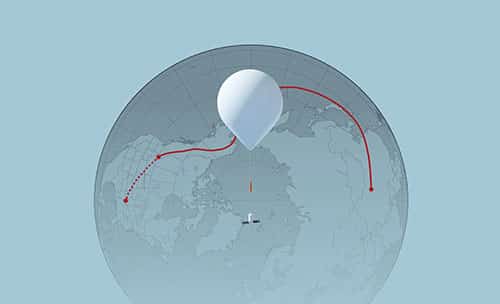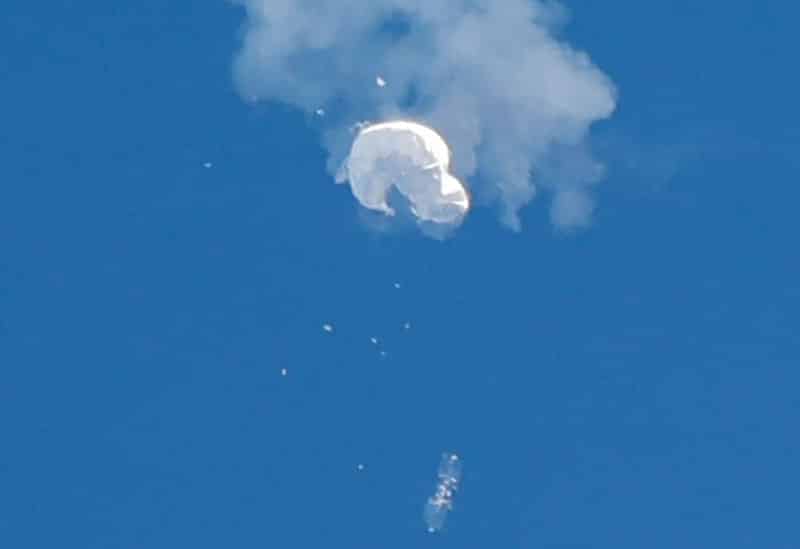The Chinese spy balloon that was shot down in the United States has been connected by the U.S. intelligence to a surveillance program run by Chinese People’s Liberation Army, it seems other countries have been targeted.
The surveillance balloon program operates in Hainan province off China’s south coast and been collecting information on military assets in several countries of strategic interest to China including Japan, India, Vietnam, Taiwan and the Philippines, according to several U.S. officials, who spoke on the condition of anonymity because of the matter’s sensitivity.
The surveillance airships, run by Chinese People’s Liberation Army, have been seen in over five continents. Japan’s military facilities were targeted by Beijing.

Hainan is an island off the southern coast of China that has long been a PLA command and control location. Though known more for its naval facility, it features an airfield that was the home base for the Chinese J-8 interceptor fighter jet that collided with an American EP-3 spy plane in 2001.
On Monday, the U.S. Deputy Secretary of State Wendy Sherman led a briefing on China’s balloon espionage, said a senior administration official familiar with the matter. The department also sent to every U.S. Embassy a “detailed information” on the espionage that can be shared with allies and partners.
In Japan in 2020, an aerial globe drew attention. “Some people thought this was a UFO,” said a Japanese official. “In hindsight people are realizing that was a Chinese espionage balloon.
While most of China’s long-range surveillance efforts are conducted by its expanding military satellite array, the surveillance is up in the upper atmosphere at altitudes above where commercial jets fly, they fly between 60,000 and 80,000 feet or higher, officials said.
Analysts still don’t know the size of the balloon fleet, but there have been “dozens” of missions since 2018, said one U.S. official. They take advantage of technology provided by a private Chinese company that is part of the country’s civil-military fusion effort — a program by which private companies develop technologies and capabilities used by the Chinese People’s Liberation Army.
China’s officials have asserted that the airship was a weather balloon blown off course. “This is false,” a U.S. official said. “This was a PRC surveillance balloon. This surveillance balloon purposefully traversed the United States and Canada. And we are confident it was seeking to monitor sensitive military sites.”
Some commentators have made light of the Chinese effort, noting that balloons are not the most high-tech of platforms. But others caution against dismissing the balloons’ potential.

In recent years, at least four balloons have been spotted over Hawaii, Florida, Texas and Guam — in addition to the one tracked last week. Three of the four instances took place during the Trump administration but were only recently identified as Chinese surveillance airships. Other balloons have been spotted in Latin America and allied countries in the Pacific, officials have said.
President Biden directed that all sensitive sites were protected from espionage, “which was straightforward because we could track the path of the balloon and ensure no sensitive activities or unencrypted communications would be conducted in its vicinity,” said National Security Council strategic communications coordinator John Kirby. “At the same time, we turned the tables on China and collected against the balloon, so that we would learn more about China’s capabilities and tradecraft.”
Monitoring the recent balloon helped fill in gaps about the four others, officials said. The U.S. military sent up fighter jets and other aircraft over the past week to observe the airship. A Chinese spy balloon that crashed off the Hawaiian islands last June also yielded helpful information, including about the nature of the technology China is using, they said.
For instance, some of the balloons are outfitted with electrooptical sensors or digital cameras that, depending on their resolution, can capture highly precise images, officials said. They also are equipped with radio signal and satellite transmission capability, they said.
The spy balloon shot down Saturday first entered U.S. airspace over Alaska on Jan. 28. It crossed north of the Aleutian islands, back over mainland Alaska, over Canada and then over northern Idaho last week, but the Pentagon did not acknowledge its presence until NBC News reported last Thursday that the Pentagon was tracking the balloon over Montana.
Some Republicans criticized the Biden administration for not shooting down the balloon sooner; which led the U.S. Secretary of State Antony Blinken to postpone a trip to Beijing, an announcement made hours before his plane was set to take off.
China’s Ministry of Foreign Affairs was apparently disturbed that Blinken cancelled his visit. The ministry initially issued a statement, saying China “regrets that the airship strayed into the United States by mistake.” Beijing has since been contacting neighboring countries to keep lines of communications open amid the growing concern.
In a statement over the weekend, a Ministry of Foreign Affairs spokesperson appealed for maintaining “a coolheaded and prudent” approach to the incident.

